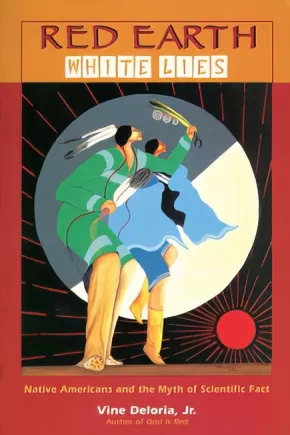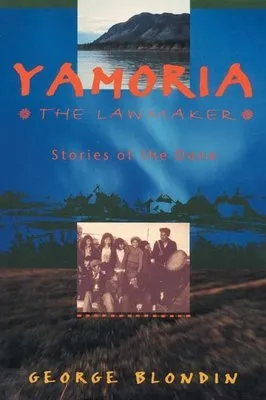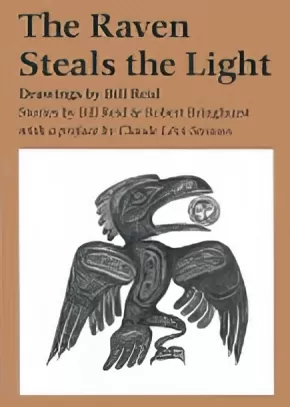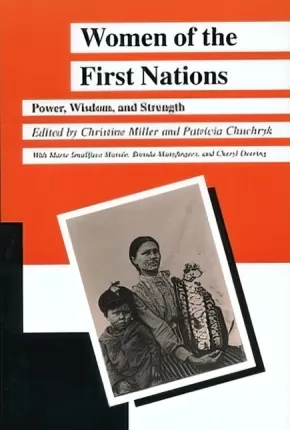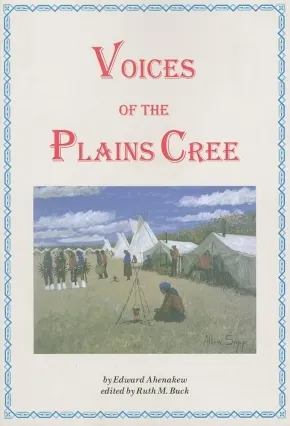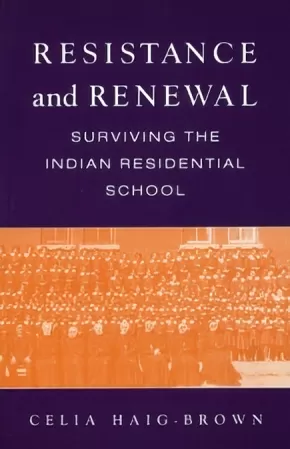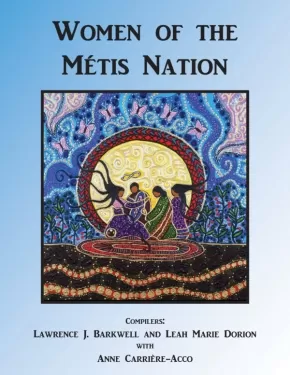
Indigenous Studies
1021
-
1030
of
1030 Results;
Sort By
Go To
of 69
The Baby Blues
$16.95
Format:
Paperback
Text Content Territories:
Indigenous;
Reading Level: N/A
ISBN / Barcode: 9780889224063
Synopsis:
Synopsis:
The Baby Blues is Drew Hayden Taylor’s highly wrought farce of patrimony in a stifling, politically correct, post-colonial milieu of “fancy dancers” of every stripe on the powwow trail. In juxtaposing three generations of careless wandering hedonists, progenitors of a string of offspring from their six-night stands, with their erstwhile naïve women partners who are always left holding the bag, the “big questions” of heritage, family, cultural context and personal identity are ruthlessly stripped of their conventional meanings and become so much useless, embarrassing roadkill on the highway of life.
Cast of 3 women and 3 men.
Additional Information
96 pages | 5.50" x 8.50" | Paperback
Pleasure of the Crown: Anthropology, Law and First Nations
$34.95
Format:
Paperback
Text Content Territories:
Indigenous Canadian; First Nations; Dene; Dakelh (Carrier); Wet’suwet’en; Gitxsan (Gitksan);
ISBN / Barcode: 9780889223158
Synopsis:
Synopsis:
In-depth analysis of the 130-year history of the Aboriginal title issue in British Columbia, including the Gitksan and Wet'suwet'en case.
Anthropologists have traditionally studied Europe’s “others” and the marginalized and excluded within Europe’s and North America’s boundaries. This book turns the anthropologist’s spyglass in the opposite direction: on the law, the institution that quintessentially embodies and reproduces Western power.
The Pleasure of the Crown offers a comprehensive look at how Canadian, particularly British Columbian, society “reveals itself” through its courtroom performances in Aboriginal title litigation. Rather than asking what cultural beliefs and practices First Nations draw on to support their appeals for legal recognition of Aboriginal title, Culhane asks what assumptions, beliefs, and cultural values the Crown relies on to assert and defend their claims to hold legitimate sovereignty and jurisdiction over lands and resources in B.C. What empirical evidence does the Crown present to bolster its arguments? What can thus be learned by anthropologists and the public at large about the historical and contemporary culture of the powerful?
Focusing in particular on the Gitksan and Wet’suwet’en case, the book traces the trial of Delgamuukw. v. Regina from its first hearing during 1987 and 1991 to its successful appeal to the Supreme Court of Canada, which issued a landmark ruling on the case on December 11, 1997.
Additional Information
416 pages | 6.00" x 9.00" | Paperback
Red Earth, White Lies: Native Americans and the Myth of Scientific Fact (1 in stock)
$22.95
Format:
Paperback
Text Content Territories:
Indigenous American; Native American;
ISBN / Barcode: 9781555913885
Synopsis:
Synopsis:
Leading Native American scholar and author of the best-selling books God Is Red and Custer Died for Your Sins, Vine Deloria, Jr., addresses the conflict between mainstream scientific theory about the world and the ancestral worldview of Native Americans. Claiming that science has created a largely fictional scenario for American Indians in prehistoric North America, Deloria offers an alternative view of the continent's history as seen through the eyes and memories of Native Americans.
Yamoria the Lawmaker: Stories of the Dene
$24.95
Format:
Paperback
Text Content Territories:
Indigenous Canadian; First Nations; Dene;
Reading Level: N/A
ISBN / Barcode: 9781896300207
Synopsis:
Synopsis:
Dene Elder George Blondin creates a spiritual guidebook that weaves together oral stories with the recounting of how the northern Canadian Dene came to depend on the European fur traders. The result is a magical journey for readers of any heritage.
Additional Information
240 pages | 6.00" x 9.00" | Paperback
The Raven Steals the Light
$18.95
Artists:
Format:
Paperback
Text Content Territories:
Indigenous Canadian; First Nations; Haida;
ISBN / Barcode: 9781550544817
Synopsis:
Synopsis:
Ten masterful, complex drawings by Bill Reid are accompanied by ten episodes from Haida mythology told by Bill Reid and Robert Bringhurst. The result brings Haida art and mythology alive as never before in an English-speaking world. The collection includes, says Reid, "a good selection of bestiality, adultery, violence, thievery and assault, for those who like that sort of thing."
Educator Information
This work is available in French: Corbeau vole la lumiere
Additional Information
112 pages | 6.13" x 8.44"
Women of the First Nations: Power, Wisdom, and Strength
$24.95
Format:
Paperback
Text Content Territories:
Indigenous Canadian; First Nations;
ISBN / Barcode: 9780887556340
Synopsis:
Synopsis:
"From diversity comes strength and wisdom”: this was the guiding principle for selecting the articles in this collection. Because there is no single voice, identity, history, or cultural experience that represents the women of the First Nations, a realistic picture will have many facets. Accordingly, the authors in Women of the First Nations include Native and non-Native scholars, feminists, and activists from across Canada.
Their work examines various aspects of Aboriginal women’s lives from a variety of theoretical and personal perspectives. They discuss standard media representations, as well as historical and current realities. They bring new perspectives to discussions on Aboriginal art, literature, historical, and cultural contributions, and they offer diverse viewpoints on present economic, environmental, and political issues.
This collection counters the marginalization and silencing of First Nations women’s voices and reflects the power, strength, and wisdom inherent in their lives.
Voices of the Plains Cree
$18.00
Format:
Paperback
Text Content Territories:
Indigenous Canadian; First Nations; Cree (Nehiyawak); Plains Cree;
ISBN / Barcode: 9780889770836
Synopsis:
Synopsis:
When buffalo were many on the western plains, when Cree and Blackfoot warred in unrelenting enmity, when the Sun Dance and the shaking tent were still a way of life these were the days of Chief Thundershild (1849-1927). His stories of a fierce and vanished freedom are reprinted here, exactly as he told them to Edward Ahenakew in 1923. His voice, simple and poetic, resonates with the wide expanse of sky, the song of the wind, the sound of water.
The other voice in this volume is equally moving, but in a very different way. It is the voice of Old Keyam, pained and angry, raised in protest against the Indians' lethargy and the white man's insensitivity. A fictional character, semi-autobiographical, he is very much the voice of Edward Ahenakew, telling of life on the reservations in the new white world of the early twentieth century.
Resistance and Renewal: Surviving the Indian Residential School (4 in Stock)
$19.95
Format:
Paperback
Text Content Territories:
Indigenous Canadian;
ISBN / Barcode: 9780889781894
Synopsis:
Synopsis:
One of the first books published to deal with the phenomenon of residential schools in Canada, Resistance and Renewal is a disturbing collection of Native perspectives on the Kamloops Indian Residential School(KIRS) in the British Columbia interior. Interviews with thirteen Natives, all former residents of KIRS, form the nucleus of the book, a frank depiction of school life, and a telling account of the system's oppressive environment which sought to stifle Native culture.
Winner of the Roderick Haig-Brown Regional Prize (BC Book Prize) in 1989.
Now in its 8th printing.
Authenticity Note: This book has received the Authentic Indigenous Text label because of the interviews and contributions of Indigenous peoples in this work, whom the author thanks and acknowledges in the introduction of the book. It is up to readers to determine if this an authentic work for their purposes.
Robes of Power: Totem Poles on Cloth
$32.95
Format:
Paperback
Text Content Territories:
Indigenous Canadian; First Nations;
Grade Levels: University/College;
ISBN / Barcode: 9780774802642
Synopsis:
Synopsis:
The button blanket is eye-catching, prestigious and treasured -- one of the most spectacular embellishments to the Indian culture of the Northwest Coast and a unique form of graphic and narrative art. The traditional crest-style robe is the sister of the totem pole and, like the pole, proclaims hereditary rights, obligations and powers. Unlike the pole, about which countless books and papers have been written, the button blanket has had no chroniclers. This is not only the first major publication to focus on button blankets but also the first oral history about them and their place in the culture of the Northwest Coast. Those interviewed include speakers from six of the seven major Northwest Coast Indian groups. Elders, designers, blanket makers, and historians, each has a voice, but all do not conform to any one theory about the ceremonial robe. Rather, the book is a search for the truth about the historical and contemporary role and traditions of the blanket, as those relate to the past and present Indian way of life on the Pacific Northwest Coast.
Women of the Métis Nation
$30.00
Editors:
Text Content Territories:
Indigenous Canadian; Métis;
Reading Level: N/A
ISBN / Barcode: n/a
Synopsis:
Synopsis:
Métis Women are the heart and soul of the Métis people. Without them, there would be no Métis Nation. They are the strength behind our families, communities, and places of work. In the past, their kinship networks established where people settled and whom people married. Sovereign within their familial and community roles, they were the healers, the stewards of the land and its resources, the keepers of Indigenous knowledge, and the midwives who kept the Métis Nation nurtured, educated, and sustained. This tradition has continued into the present as Métis women have moved past their domestic and familial spheres into areas such as social advocacy, the arts, sports, law, post-secondary education, and entrepreneurship. Containing hundreds of biographies, Women of the Métis Nation is an ambitious role model book that documents more than 200 years of trailblazing Métis women.
Additional Information
235 Pages | Nonfiction
Sort By
Go To
of 69





